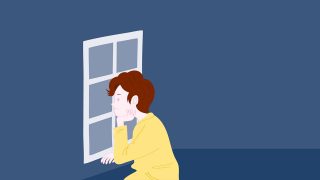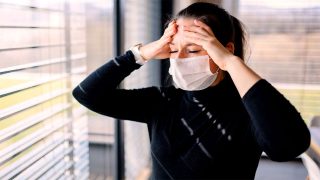Seasonal Affective Disorder and COVID-19

As days grow shorter, daylight hours decrease, and temperatures drop in much of the world, many people may begin to feel the effects of seasonal affective disorder.
Seasonal affective disorder is a type of depression that typically occurs during the fall and winter months. It causes mood changes and other symptoms of depression.
These seasonal dips in mood cause feeling lethargic, difficulty sleeping, loss of appetite, and weight loss. In addition, the source of some people’s overstimulation and anxiety is due to changes in weather conditions, lack of sunlight and cold weather conditions.
Seasonal affective disorder is a very common disorder. The National Institute of Mental Health says millions of people have seasonal affective disorder, but notes that many people are unaware of the disorder.
Seasonal affective disorder and COVID-19: “Serious risk for depressive episodes and increased anxiety.”
Experts say that as winter approaches during the pandemic, seasonal affective disorder is combined with COVID-19 anxiety for many people.
Most people are reeling from the pandemic conditions of the past year and a half. The staggering death toll of more than 5 million people has affected many families.
Additionally, the lingering effects of social isolation and financial turmoil have also triggered social stress.
While we are in a much better position than last winter with the rollout of the COVID-19 vaccine and available booster vaccines, uncertainty about where the pandemic is heading can trigger chronic stress, making it seem like the pandemic will never end.
Seasonal affective disorder experienced in addition to the stress caused by the pandemic; It can cause stagnation, which can further reduce motivation to adopt healthy habits like eating healthy, staying active, and managing stress.
Tips for managing Seasonal Affective Disorder and COVID-19 anxiety
If you’re feeling the double whammy of seasonal affective disorder and pandemic anxiety, experts recommend the following coping mechanisms that can help relieve the symptoms of both.
- Keeping a routine
It is very important to set achievable daily goals every day.
These can be simple, relaxing goals, like taking 10 minutes each morning to breathe deeply.
- Try light therapy
Phototherapy, or light therapy, is a recommended treatment for seasonal affective disorder. It involves sitting or working next to a light therapy box that mimics natural outdoor light.
- Take action
Studies show that physical activity can improve mental health and overall well-being.
When you think of exercise, you shouldn’t just think of going to the gym or taking a fitness class. Any physical activity you can do can be self-performed, such as walking, doing some exercise at home, or using exercise videos on video platforms.
- Take care to socialize
Connect with people who support you, inspire you, or just enjoy talking, in person or virtually.
- Practice mindfulness meditation
A proven way to help relieve symptoms of depression and anxiety, mindfulness meditation encourages people to slow their thoughts and breathe deeply.
Mindfulness helps us focus on the present moment. We are so good at thinking about the past and worrying about the future that we often miss the present moments. Thanks to awareness, we can focus on the moment and avoid worry, anxiety and stress.
- Create a list of fun activities and try doing them.
Making plans for enjoyable activities can help relieve daily stresses.
While options have been limited over the last year and a half of COVID-19—whether it’s due to fear of getting sick or financial pressure—making small plans can help.
For example, it might involve planning a weekly movie or dinner night.
- Use the power of nostalgia
The movies, TV shows, and stand-up comedy segments you know and love can provide a sense of comfort and familiarity.
- Seek professional help
Finally, many people with seasonal affective disorder and anxiety find great benefit in seeing a mental health professional.
SOURCE:
– Coping with seasonal Affective disorder during another pandemic Winter – Healthline












